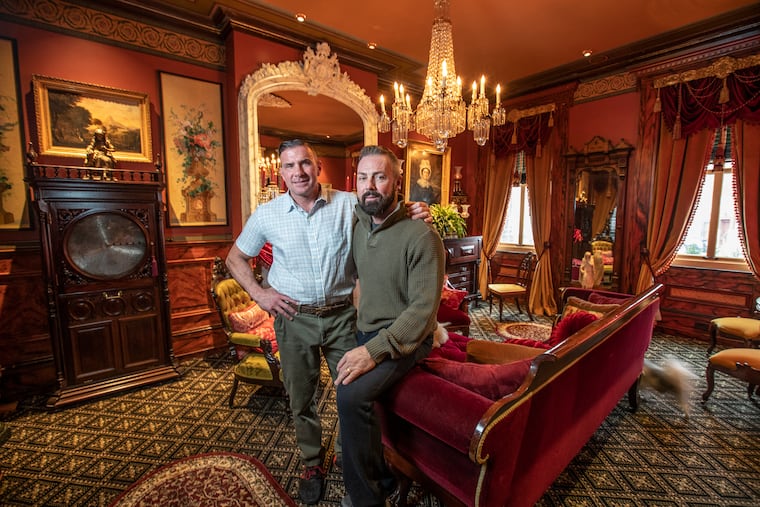An 1860 Victorian tucked among Fishtown’s revitalization
The house has become an eclectic museum, a blend of 19th century Philadelphia interiors and the couple’s unique touches.

His new neighbors thought Curt Chinnici had taken leave of his senses when he paid $64,000 for the rowhouse in Fishtown.
“I was the first person to buy a house on that block in 19 years,” Chinnici recalled. “They told me, ‘We can’t believe you paid that.’”
The place was cheap by 1995 Philadelphia standards, and its proximity to I-95 made it easy for him to get to his job as a middle school art teacher in Delaware County and to two of his favorite places, New Hope and the Jersey Shore.
Now, as he relaxes on a plush 1820s living room sofa with built-in bolsters, it’s easy to see how there was more method than madness to his purchase.
The madness came first.
The house, built about 1860, “looked like a trailer,” Chinnici says. “There was paneling all over, dropped ceilings. People had lived here forever. It had been in the same family since 1895. Nobody had done anything in 100 years.
“There was one bathroom for 13 people and no electricity on the third floor. Marble fireplaces were painted white.
“Every week, I’d haul stuff out. The trash men would complain.”
Now, thanks to Chinnici’s skills, help from a Lithuanian refugee plasterer, and the arrival nine years ago of his partner and now spouse, Troy Bianchi, the house is an eclectic museum, a blend of 19th-century Philadelphia interiors and the couple’s unique touches.
The plasterer had quite a backstory: He was a political prisoner of the Russians and had been ordered to leave the country. But Chinnici was more impressed by the work he had done on the Southern Mansion, an iconic bed and breakfast in Cape May.
Chinnici did a lot of work himself: electrical, paint and removal of the dropped ceilings, which had actually served to protect the molding.
With a side business conducting art and antique appraisals, he was well-equipped to perform his own research and hunt bargains in secondhand shops, auctions, and on the internet.
When he spotted a cover on Main Line Today magazine showing legendary socialite Robert Montgomery Scott sitting on a living room sofa identical to his, he called up Scott to ask about it.
Renovations really went into high gear when Bianchi moved in. A massage therapist by trade, he painted, tiled, and made draperies by hand.
He did the window treatments on the front of the house, importing the replacement windows from Costa Rica and Canada.
The couple strongly favor pieces from the styles of 1820s, 1830s and 1840s. In addition to the 1820s sofa, the living room has a Crawford Riddell antique chair from the 1840s. The mirror over the mantel is a design by Samuel Sloan, a Philadelphia-based architect active in the mid-19th century.
There is a sideboard in the dining room by Michel Bouvier, a French-born cabinetmaker and great-great-grandfather of Jacqueline Kennedy Onassis who came to Philadelphia in 1815.
The bedroom suite was by the Herter Brothers, a 19th-century New York firm that specialized in high-end custom-designed suites.
There are an 1860s chandelier in the dressing room, an 1840s liquor stand, an 1828 “butler’s" desk, and a 1790s marble sink rescued from a trash heap in Northern Liberties.
Outside, the neighborhood has vastly changed since he moved in, Chinnici says. “You never used to see people walking around. You didn’t see people coming off the El.”
The house is no longer an anomaly in the neighborhood, but it definitely still stands out.
Chinnici laughed as he recalled a couple standing outside his front window, trying to wave him aside so they could take a photo without him in it.
He doesn’t recall whether he did move, only what he was thinking: “Wait a minute. I live here.”
Is your house a Haven? Nominate your home by email (and send some digital photographs) at properties@inquirer.com